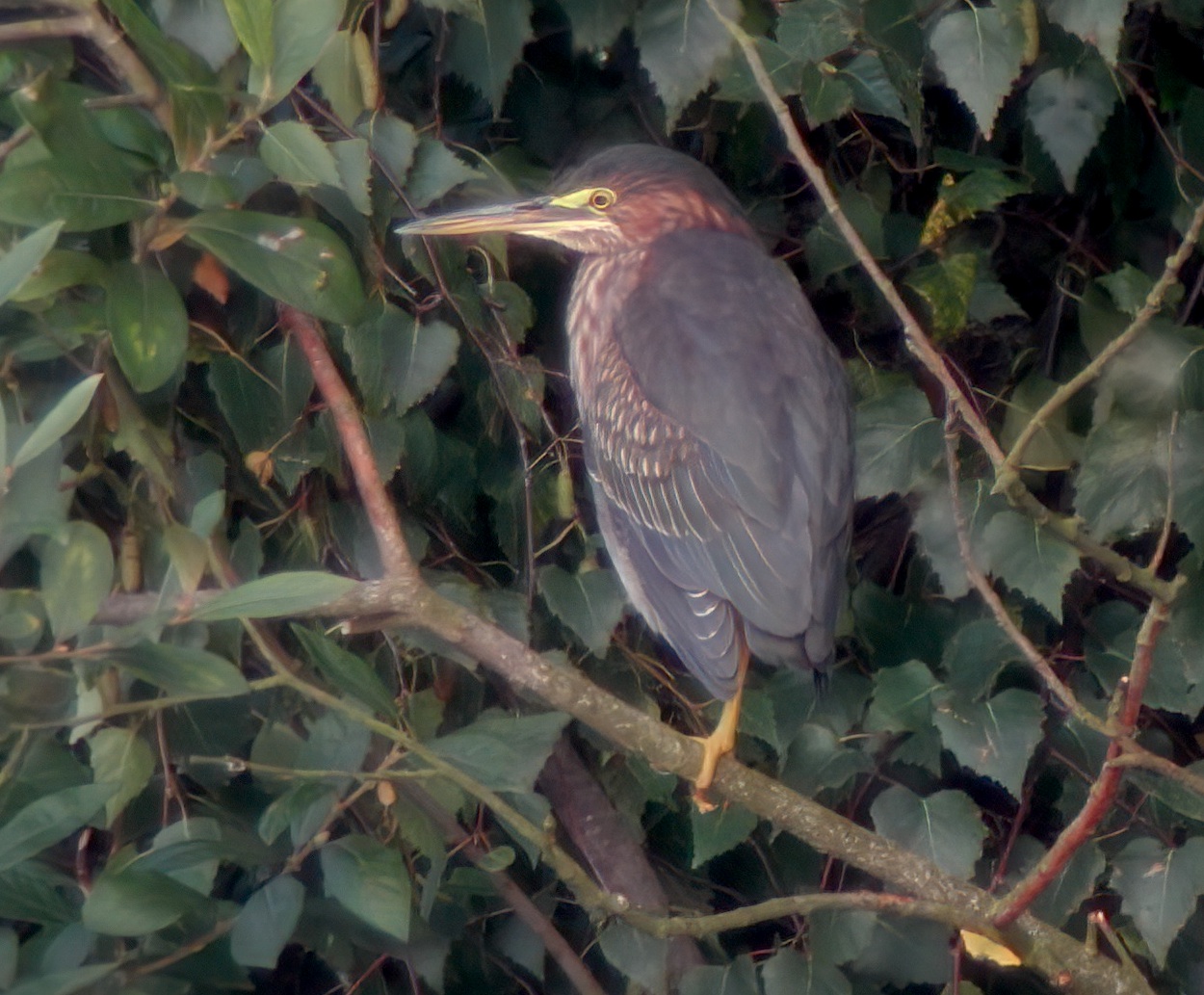Green Heron Butorides virescens

The discovery of a Green Heron at Messingham SQ was the ornithological event of 2001, present from September 24th-October 2nd, the only county record, and often very elusive. The bird was discovered when feeding in the open in an area of cut reeds and fortunately it stayed for nine days enabling many local birders and those from further afield to see it. This was the first live Green Heron in Britain since 1982 - a dead bird, probably killed by a fox was discovered in Scotland in 1987. There have been just eight British records in all to 2021, seven of them since 1950. The first British record was of a bird shot by a gamekeeper near Pentewan, Cornwall on 27th October 1889. Further records have occurred in Yorkshire (27th November-6th December 1982) and Lothian (25th October 1987, corpse) and, subsequent to the Messingham bird, in Anglesey (November 7th-20th 2005, also seen in Ireland), Kent (October 19th-November 9th 2008) and Cornwall (October 6th-December 1st 2010). There was also one in Jersey and Guernsey in 1992. Records are split evenly between east and west coast and the most recent record turned up in Pembrokeshire on a garden pond in April 2018, the first spring record. Whether this had turned up the previous autumn and over-wintered is purely speculative. It stayed for 10 days, not quite as long as the previous record in Cornwall in 2010 present for 57 days after turning up October 6th.
| Site | First date | Last date | Count | Notes |
| Messingham SQ | 24/09/2001 | 02/10/2001 | 1 | 1CY bird |
Finder’s report: Green Heron at Messingham SQ, September 24th, 2001, first county record.
by A. Stanworth.
Note: this account appeared in the Lincolnshire Bird Report for 2001, and also refers to the original BBRC submission.
Circumstances
On Monday September 24th, 2002, I was visiting Messingham Sand Quarry with my partner Andrea. It was mid-morning, about 10.30 hr., and we walked out towards the wader hide. Along the path to the hide a gap in the alders allows a view out across reedbed and wet grassland towards the main pond. A solitary shape in an area of cut reed caught my eye and I stopped for a better look. It looked like a small heron of some kind, but not one I was familiar with. It was moving slowly through the shallow water and over patches of cut reed. With the view that I had it seemed to have quite distinctive colouration; a grey-green mantle and wings, a rufous neck, and yellow legs. I noted what characteristics I could then we walked on to the wader hide to see what was about.
When we walked back from the hide the small heron was fishing in the pools, and noticeably raising the feathers on its crown and bobbing its short tail. By this time, I was beginning to think it might be something unusual and we went straight home so I could look through some bird guides. The only thing it could be was a Green Heron, but the guide said that there had only ever been three recorded in Britain previously, so I was beginning to convince myself I must be wrong. My father Tony, also keen on birds, said he would come up for a look and we hurried back at about midday, by which time it had started raining. I was concerned that the bird’s neck colouration wasn’t consistent with the book, but the book did note that juvenile Green Herons had more variable striations on the neck.
After another look, and despite the rain, we decided it couldn’t really be anything else and excitedly I rang a birder friend of mine who suggested letting others know. In the end the Green Heron stayed around for a few days and was seen by good numbers of visiting birders.
Description (from the BBRC submission)
About 40 cm. in height, heron-like appearance with slatey-grey crown, wings, and mantle. Reddish neck and throat, with striations of red and cream on lower neck. Yellow stripe running to the eye and yellowing on lower mandible, rest of beak dark. Bright yellow legs. Mottling on coverts, white dots on grey.
Hunched stance when stationary, long extending neck when foraging. Sharp, lunging, stabbing motion during which wings partially opened. Feather raising on crown and bobbing of tail.
Reference
(Account as per new Birds of Lincolnshire (2021), included September 2022)

